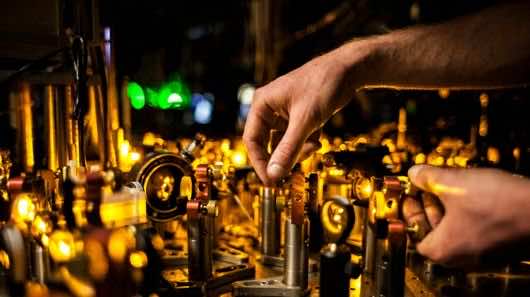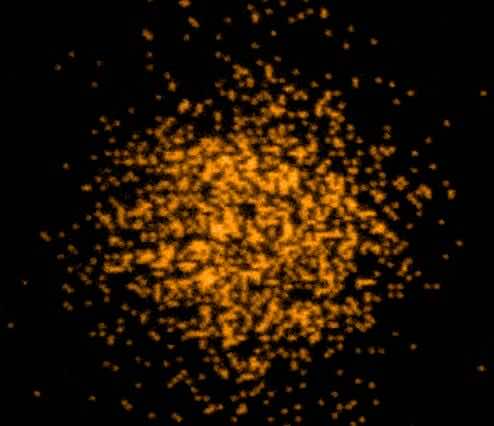Scientists and engineers working at Massachusetts Institute of Technology (MIT) have developed a technique to take actual shots of Fermions in groups of thousand at a time. It involves the use of Laser to suspend them in one place and to freeze them in their place.
But what kind of subatomic particles Fermions? Well, let’s try to understand a little bit of Particle Physics 101.
There are two fundamental types of particles; Ones with mass are called fermions and the ones without mass are called bosons. Bosons are pure energy and therefore they cannot be classified as mass particles. Fermions include all kinds of sub-atomic particles like electrons, neutrons, protons, etc. while bosons include photons, gravitons and other lesser known particles. Fermions cannot be viewed under a microscope because their spin quantum numbers and constant vibrations make it impossible for us to see them in a single piece.
To counter the spinning states of these particles, ultra-cold temperatures approaching absolute zero (zero Kelvin) are used. This measure somewhat stops their spin and then we have a clearer shot at them. Boson particles photons are much easier to observe under a microscope because it is easy for them to be in the same quantum state for large periods of time. Fermions simply can’t do that due to their particulate nature. Boson microscopes were successfully made at Harvard University and Max Planck Institute of Quantum Optics. But no fermion microscope had been successfully made up to date.
First, the MIT guys had to find a new way to cool the particles down to an observable level. Even techniques used in 1995 Bose-Einstein condensation that allowed the fermions to be cooled down to ten-thousandth part of the absolute zero were termed insufficient to hold individual particles at one place. While the particles are coming to this low temperature, they emit photons that can be used to find the exact location of the particle on the crystal lattice. We know the exact location of the particle, so we can tweak it a bit more and arrange it in any formation as we like.
But viewing these particles was difficult because when Light was shone back at them for viewing, it disrupted their dormant energy state and knocked them out of place. The team cleverly resolved this by shooting two beams towards them. One was absorbed and before the particle’s positions disturbed; the other beam came in and cooled it back to original shape lower excited state.
With this technique, the researchers were able to capture 1,000 fermions in single images. These images will help us understand the fundamental nature of fermions. Since the particles used here were electrons, it is hoped that they will open new doors for high-temperature superconducting, lossless electricity propagation and building of quantum computers itself.
Now, we can safely say that real atomic pictures aren’t far ahead. It will be great to view the atoms up that close!





I have a curious mind …here is a question. If images of “the pillars of creation ” light years away , are so detailed , why were the first images of Pluto pixelated out of focus?
In all fairness , to be told that 14.5 billion yrs ago the big bang happened .. but not defined as a speculation , is an insult to a persons intellect (I guess someone was there to witness it!) Also microscopic research of a cell , molecule , atom , subatomic particle , higgs-boson “Discovery”…logic keeps begging the question “What is smaller than that?” Like when you look up at night at the stars and it is speculated it has no end. I truly would like to find out but maybe we will never be able to ……
This article contains several mistakes that i would consider bad enough to be corrected.
First, the distinction between fermions and bosons is not based on their mass. Some bosons have a non zero mass (the W, Z and H bosons masses are on the same order of magnitude – 100 GeV)
What distinguishes fermions from bosons is their spin ; most precisely, fermions spins are half integers, while bosons spins are integers.
A major consequence of this difference in their spins is that two fermions can’t occupy the same quantum state, which is referred to as the paul exclusion principle (the quantum state is a vague notion but it can somewhat be understood as their wave function) while, on the other hand, bosons tend to occupy similar quantum states
As a result, if a cavity is populated of photons (which are bosons), most of them will occupy the same lowest energy state.
However, it is difficult to concentrate a bunch of cold fermions (low agitation) in one place because it would mean they have to all occupy similar states.
The phrase “[it] stops their spin” doesn’t make much sense since the spin is an intrinsic property of a particle (just like the mass) which cannot be stopped. The spin is not a kinematic value.